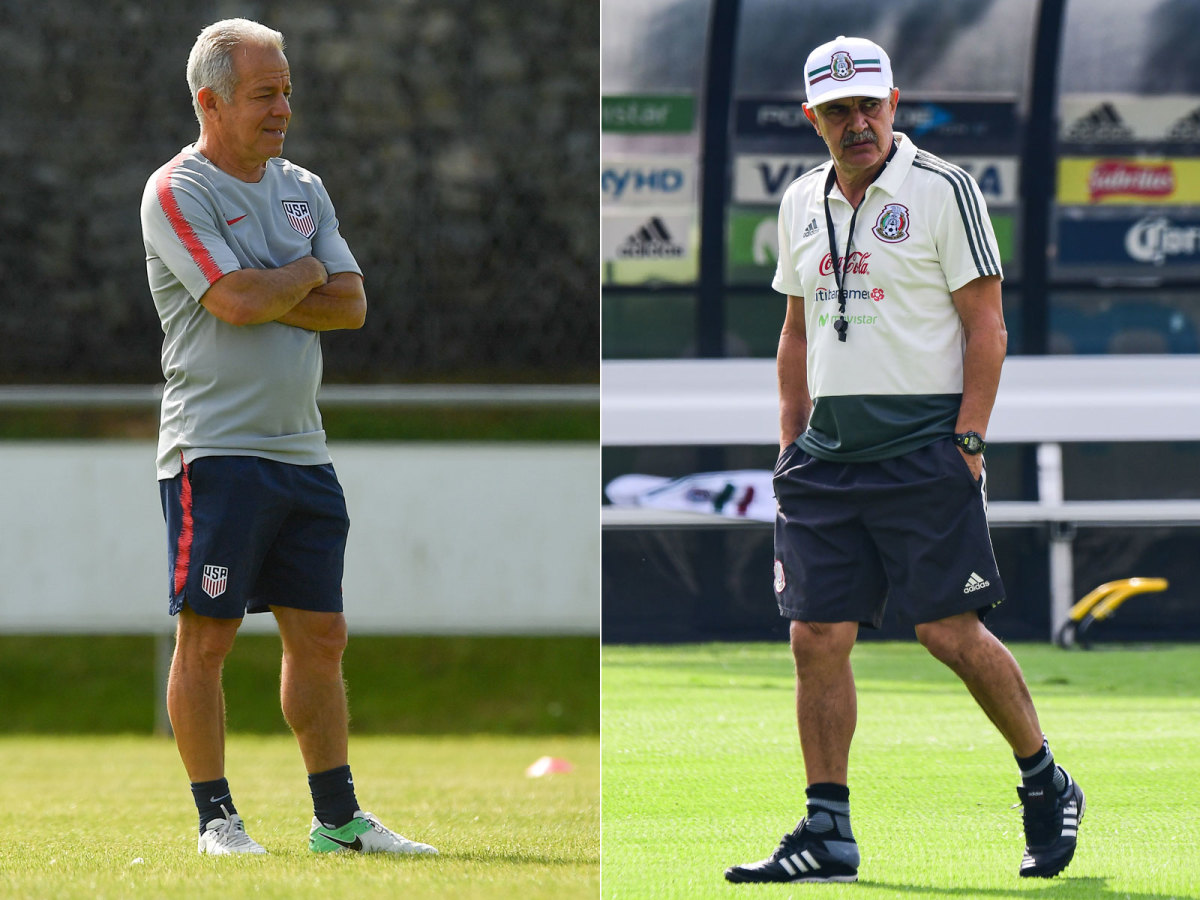Despite Recent Past, USA, Mexico Embark on Parallel Paths to Start New World Cup Cycle

A funny thing happens after the conclusion of a World Cup. The four-year vacuum is sealed, and for almost every competitive national team in the world, there's a reboot of sorts.
For some, there's a minor rejuvenation, either involving an amicable coaching change or the phasing out of a few older players and the introduction of their replacements. For others, there's a larger overhaul, necessitated either by poor results and/or the natural evolution of a player pool, accompanied by a change at the top. For a select and elite few–this time around, think France, Brazil and even Belgium and the remaining years of its golden generation–there's a linear path to continued growth.
Regardless of how the last cycle went, the USA and Mexico both find themselves on parallel paths in that middle category as they enter a low-stakes rivalry bout in Nashville Tuesday night. Make no mistake, the Americans had an unmitigated disaster in failing to qualify for the 2018 World Cup, and Mexico emerged as the region's unquestioned top team. But there's not usually a seamless transition from one cycle to the next, and the beginning of the long romp to the next World Cup presents an opportunity to start fresh.
New-Look USMNT Has Knack to Compete, Still Lacking Elsewhere in Rebuilding Period
Both the USA and Mexico are coming off humbling losses to South American powers on Friday night, albeit under typical September friendly circumstances. The USA's young squad was silenced by Brazil, with the Seleção never really needing to find its top gear in a 2-0 win. Mexico's experimental team was taught a lesson by a rampant Luis Suarez and Uruguay, who won 4-1 in Houston in a match that thoroughly entertained.
The U.S. was set up in a more defensive mode, threatening Brazil largely off set pieces and absorbing pressure on the other end. Mexico, on the contrary, tried to take it to Uruguay a bit more–and left itself susceptible to being beaten on the other end as a result–with Hirving Lozano and Raul Jimenez the danger men going forward.
But on a more micro level, take a look at the new starting points for both Concacaf foes. Both are playing in a bit of purgatory, with interim managers whose styles, player preferences and systems may not last beyond the fall.

For the USA, of course, that period has been going on for some time. Dave Sarachan has been in charge since November, stepping into the awkward spot of guiding the U.S. during an experimental and lame-duck period. He's ushered in a full gameday's roster worth of players to the senior level and begun the process of introducing them to the rigors and details of a national team camp. His time is running short, though, with general manager Earnie Stewart embarking on a long-term coaching search that most certainly will end with somebody else.
For Mexico, Tuca Ferretti is back roaming the sidelines in a caretaker role, with the length of his stay to be determined. Mexico is eyeing a full-time replacement for Juan Carlos Osorio, who exited after leading El Tri to a seventh straight exit in the World Cup's round of 16. Osorio, despite his overall success and rousing player endorsement, always seemed to have critics and detractors in Mexico. His methods and penchant to rotate the squad were never universally accepted, and the fact that Mexico followed a landmark win over Germany and another over South Korea with consecutive losses to Sweden and Brazil undid all the good early work in Russia. Osorio has since been hired by Paraguay, and Mexico, after having found rare stability for nearly three years, is back to the drawing board.
Both countries also boast young talent on the rise to pair with veterans who will be playing for their international futures.
Lozano appears set to take over as the face of El Tri; Roberto Alvarado, Diego Lainez and Erick Gutierrez make up part of the nucleus of the next chapter; and older stars like Javier Hernandez, Andres Guardado will perhaps be phased out of the picture over the next few years, or at the very least have their roles reduced. On the other side, Christian Pulisic is the foundation of the USA's rebuild, with the Europe-based Tim Weah, Weston McKennie and Josh Sargent all earmarked for big future roles and hangers-on like DeAndre Yedlin, John Brooks and Jozy Altidore still presumably in frame.
USMNT Finalizes Friendly With Peru to Complete 2018 Schedule
Tuesday's friendly won't really dictate much for either national team given the temporary nature of their current structures. There is no real statement to be made in this game, not like one that could be made in a World Cup qualifier in the past in Mexico City or Columbus. But it is a common acknowledgement of where each stands, which, despite where they have left off, is in many ways a similar square one.
Entering the 2014 World Cup, it was the USA that appeared superior, while Mexico barely made it to Brazil. Ahead of the 2018 World Cup, the USA and Mexico's paths diverged, with latter's leading to Russia, while the former's presented an unexpected detour and U-turn back home. With the slate now clean and the reset button hit, will both parallel paths lead directly to Qatar?
